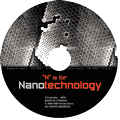Home > Directory > "N" Is For Nanotechnology - Our Review
Review of "N" is for Nanotechnology
Last Updated: Monday, 20-Apr-2015 19:51:36 PDTProduction Team: Ken Hama, Naomi Matsuura, Selva Nair. knhproductions.ca

|
Review by Rocky Rawstern |

BUY NOW - click on image |
"N is for Nanotechnology" is a 30 minute documentary exploring the hypes, hopes and facts of this fascinating field as seen through the eyes of award-winning scientists, industry leaders and writers.
What I found true throughout "N" is for Nanotechnology is that everyone who contributed has obviously spent a great deal of time thinking about her or his area of expertise - especially as it applies to nanoscience. They each have the ability to talk about it in lay terms, and they all seem genuinely excited about a nanotech-enabled future.
I recommend "N" is for Nanotechnology to anyone who does not now but wishes to understand nanotechnology basics. For those who would delve a bit deeper into the complex social and ethical issues, I highly recommend the Foresight Institute and the Center for Responsible Nanotechnology.
My Review
In order to keep this review simple and to the point, I'll just say a few words about what you'll see and hear, where I agree, and a where I respectfully disagree. I'll close with a few words about the future, and some notable quotes from the production.
This is a well done introductory to the science of the nanoscale, which covers the following:
- Introduction to nanotechnology
- Tools
- Top-down vs. bottom-up (self-assembly)
- History
Engines of Creation - Misconceptions
Critique of Prey
Debunking of grey goo - The convergence of the sciences
- Funding in Canada vs. rest of the world
- Carbon Nanotubes (CNT's)
- Future applications
Computer Chips
Medicine - diagnosis, sensors, drug delivery
Quantum dots
Pollution remediation
Quantum computers
The producers of "N" is for Nanotechnology cover the basics by interviewing scientists at the University of Toronto, and a variety of others such as Devon Hamilton of the Ontario Science Centre. As a consequence, this presentation focuses primarily on our friends to the North, and is from their points of view. However, the science they talk about is universal - ask the same questions to other scientists and expect to get similar answers.
Overall Rating: 



 as it explains in simple terms most of the important "introductory" points.
as it explains in simple terms most of the important "introductory" points.
What it does not do is try to take on the hotly contested and complex social and economic issues, and rightly so; those topics deserve several other presentations, and many discussions. If you would like to learn more about these issues, check out the Foresight Institute and the Center for Responsible Nanotechnology.
There are two points with which I respectively disagree. The first is one made by Professor Christopher Yip, when he states "One of the bigger misconceptions about nanotechnology is that it's going to be the solution to all of our woes." He goes on to say, facetiously, "We'll be able to cure ourselves by having fanciful robots running around (in our bodies) that can do things for us. Examples might be the autonomous robots from a health perspective that go in and clear arterial clots." He clearly doesn't believe this a possibility.
It is my contention that as envisioned by Robert Freitas Jr., nanorobots are both possible and likely. With a modest financial incentive (think NanoX-Prize), and a not-too-hard-on-the-wallet injection of investment dollars (pick your currency, company, and country), we could soon see nanorobots in the form of sensors and self-directing drug delivery mechanisms (1).
My second disagreement is in regards to a belief of several of the contributors; they think that self-assembled nanotechnology (2) is possible, but a near-term time frame is way too soon. They also contend that it will only come as a result of a great deal of research, and occur many years in the future.
In this area I concur with Chris Phoenix and Mike Treder at CRN when they opine that limited molecular nanotechnology (LMNT) could happen much sooner than some so-called mainstream prognosticators predict, and with increasingly fewer dollars as time passes. Further, I think it likely that given the rate of scientific progress, coupled with ever-increasing worldwide research budgets, we'll see LMNT before the end of this decade. If not then, and unless the funding spigot is turned off, I'd be very surprised if it did not occur within the next ten years. (3)
One of the areas I think needs bit of clarification is the topic of "things that are not going to happen," such as "self-replicating nanostructures that completely treat a disease or kill people - that's not going to happen."
I think the point here is the "self-replicating" aspect, with which I agree - it is not likely to happen anytime soon. What I believe we will see is mechanisms that are built from nanoscale components, that are self-guided (pre-programmed by humans), purpose-driven, and intrinsically unable to self-replicate.
Several of those interviewed feel that some form of limited molecular manufacturing won't be seen in the near term, another position I think needs expanding upon. If current funding levels do not increase, then perhaps it will not, in the near-term. However, should one or more countries or companies or venture groups or wealthy Dot-comers dedicate a few billion dollars (4) (and less as time goes by), then we're more than likely see at least a limited form of MNT within the decade.
I base this opinion on several factors:
- The rate of discoveries and subsequent technologies, which are growing on a double exponential curve, and doubling in capability and price-performance every year. (5)
- Investment by governments, businesses, universities, venture groups, and private wealthy individuals continues to rise, around the world, in hundreds of areas, and at rate of 10's of billions of dollars per year.
- An ever growing awareness of nanotechnology and its implications by the public. Coupled with an increasing amount of money being spent on research into the ethical and environmental aspects, I believe that we're rapidly approaching a time when molecular manufacturing is inevitable.
What the Future Holds
According to those interviewed, there are several issues that we need to pay attention to, all of which I wholeheartedly agree:
"Nanotechnology suggests the possibility of making extremely small, submicroscopic devices and machines."
"Nanotechnology will end up making breakthroughs in ways that we cannot yet anticipate."
"Nanotechnology is powerful, and we have to ensure that we harness its power towards useful ends."
In closing, here are two quotes that really stood out:
"The ability to build something from the most fundamental constituents is a massive breakthrough - it's going to change everything."
—Robert J. Sawyer, Author
"Because we have the ability to change materials - even at the nanoscale - to construct materials, build them up atom by atom essentially, that gives material scientists a great deal of power in terms of designing a macroscopic material that we can use, based on the nanoscale."
—Devon Hamilton, Ontario Science Centre
(1) We'll also see cancer detection and treatment nanodevices. Using nanoparticles, it seems probable that we'll soon see single visit diagnosis and treatment of cancer. This is likely to precede Freitas' style nanorobots, and will certainly contribute to their development.
(2) I believe they are referring to what we call molecular manufacturing or molecular nanotechnology.
(3) In an email conversation, CRN's Mike Treder pointed out their time frame for LMNT: "Based on our research, we currently project it might become a reality by 2010, likely will by 2015, and almost certainly will by 2020."
(4) More entities are willing and able to invest in billion dollar increments in basic research; various governments, and companies like IBM, Samsung, and Microsoft, to name just a few.
(5) The Law of Accelerating Returns by Ray Kurzweil
"N" is for Nanotechnology Production Team: Ken Hama, Naomi Matsuura, Selva Nair. Visit their website, at knhproductions.ca
Related links:
Testimony of Ray Kurzweil on the Societal Implications of Nanotechnology
Of Chemistry, Nanobots, and Policy
Three Systems of Action: A Proposed Application for Effective Administration of Molecular Nanotechnology
Key to rating:




 = Very Best! Highly recommended.
= Very Best! Highly recommended. 


 = Very Good - Recommended
= Very Good - Recommended

 = Good
= Good
 = Less then expected.
= Less then expected.  = Poor.
= Poor. |
|
||
|
|
||
| The latest news from around the world, FREE | ||
|
|
||
|
|
||
| Premium Products | ||
|
|
||
|
Only the news you want to read!
Learn More |
||
|
|
||
|
Full-service, expert consulting
Learn More |
||
|
|
||